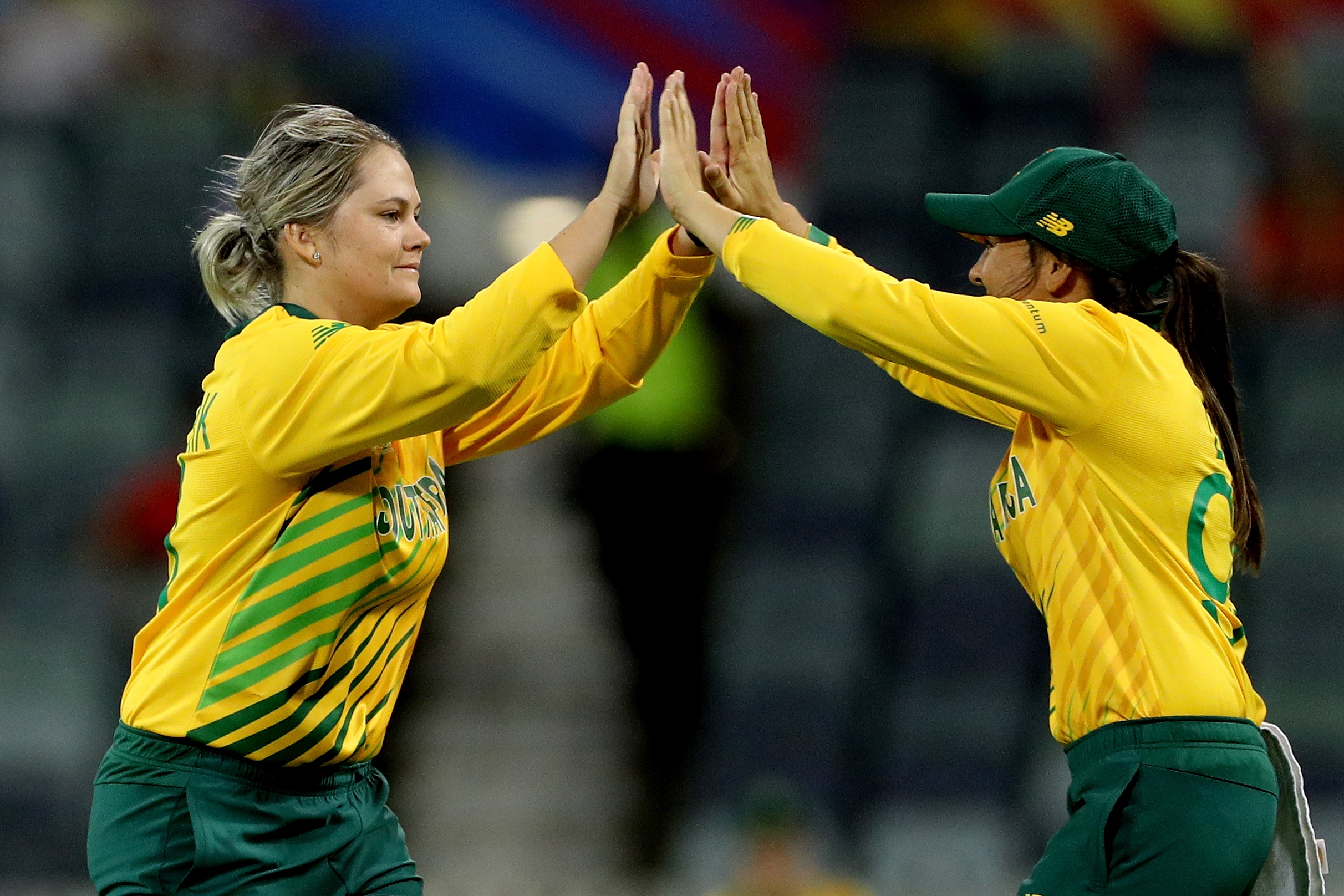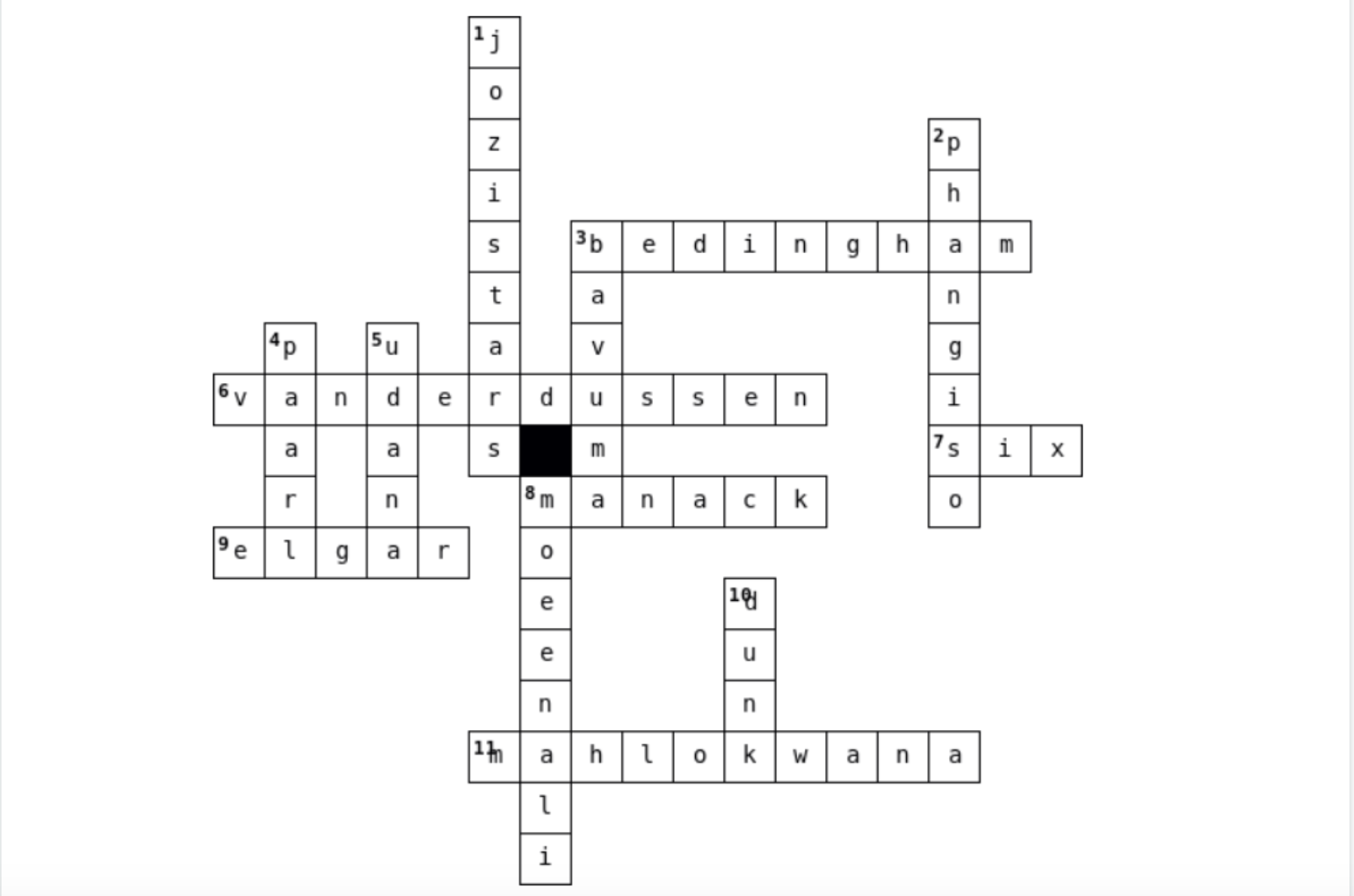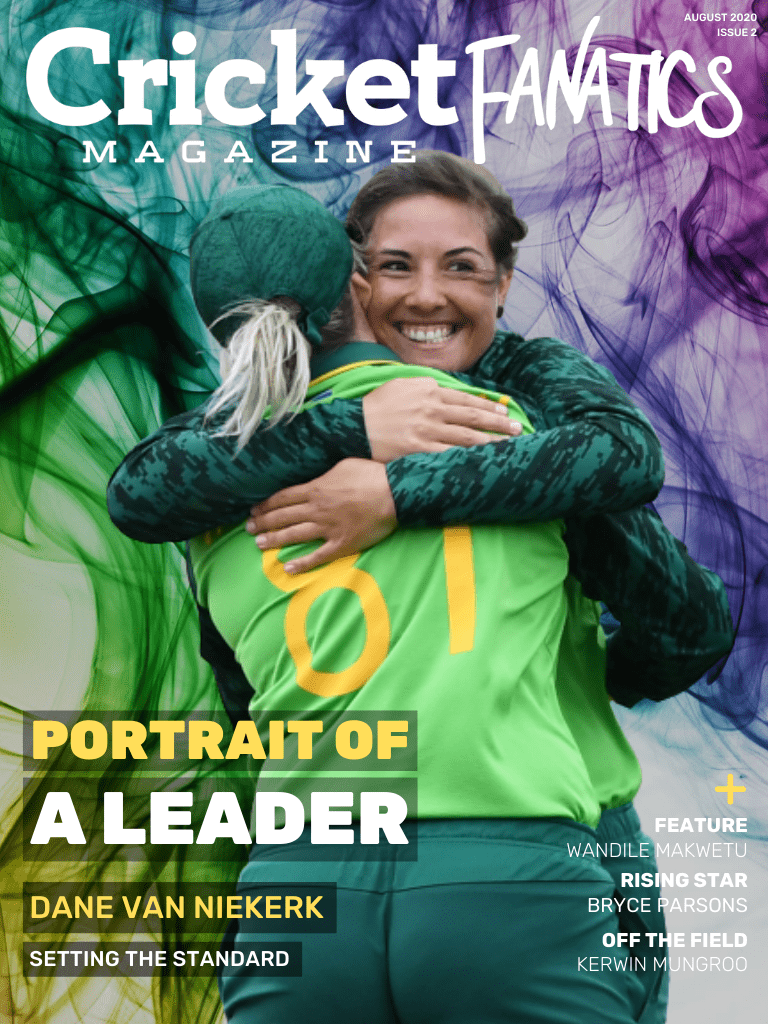
Table of Contents
EDITOR'S NOTE
Defining Leadership
Khalid Mohidin
Founder and Editor - Cricket Fanatics Magazine
When you think about Leadership in sport, the mind tends to shift instantly to captaincy. The pinnacle title of a figure who represents the decisions, strategy and ideals of how a team plays the game.
In cricket, the captain is held accountable for the success of the team more than in other sports.
Emphasis is put on the way they perform on the field, interact with their teammates, and address the media and the public. It is regarded by many as the most important role in any cricket side.
This is, however, misleading. Leadership isn't only about captaincy. Leadership is a quality that anyone can possess. During my time in the industry, I saw this first hand.
The first example that springs to mind is Marizanne Kapp. I've spoken to so many players in the Momentum Proteas side. They all explained how vital she is to the success of the team. The way she behaves in training and how her fiercely competitive nature spurs everyone on to be better and to perform at a higher level. Although Dane van Niekerk is a fantastic captain, as we will see later in this issue, Kapp is an integral cog in the ethos of the side.
There are so many more examples of this as we will come to see.
What this indicates is that being a leader doesn't end at captaincy. Everyone in the team has a responsibility to lead in their way. It is a quality of utmost importance to the success and culture of any team.
Leadership is all about motivating, inspiring, nurturing, improving, supporting and protecting your teammates no matter what – whether that is by performing well yourself or helping them to achieve their goals. This is an attribute that outlives a title.
As fans, we play a crucial leadership role too. The passion, support and loyalty we show our sports heroes is crucial to their performance. Our observations, or opinions, are integral to building an ambience that motivates and strengthens the mood and performance of any team.
We, as fans, play an important role in keeping this game alive.
In issue 2 of Cricket Fanatics Magazine Magazine, we paint the Portrait of Leadership, showing this attribute in all facets of the game.
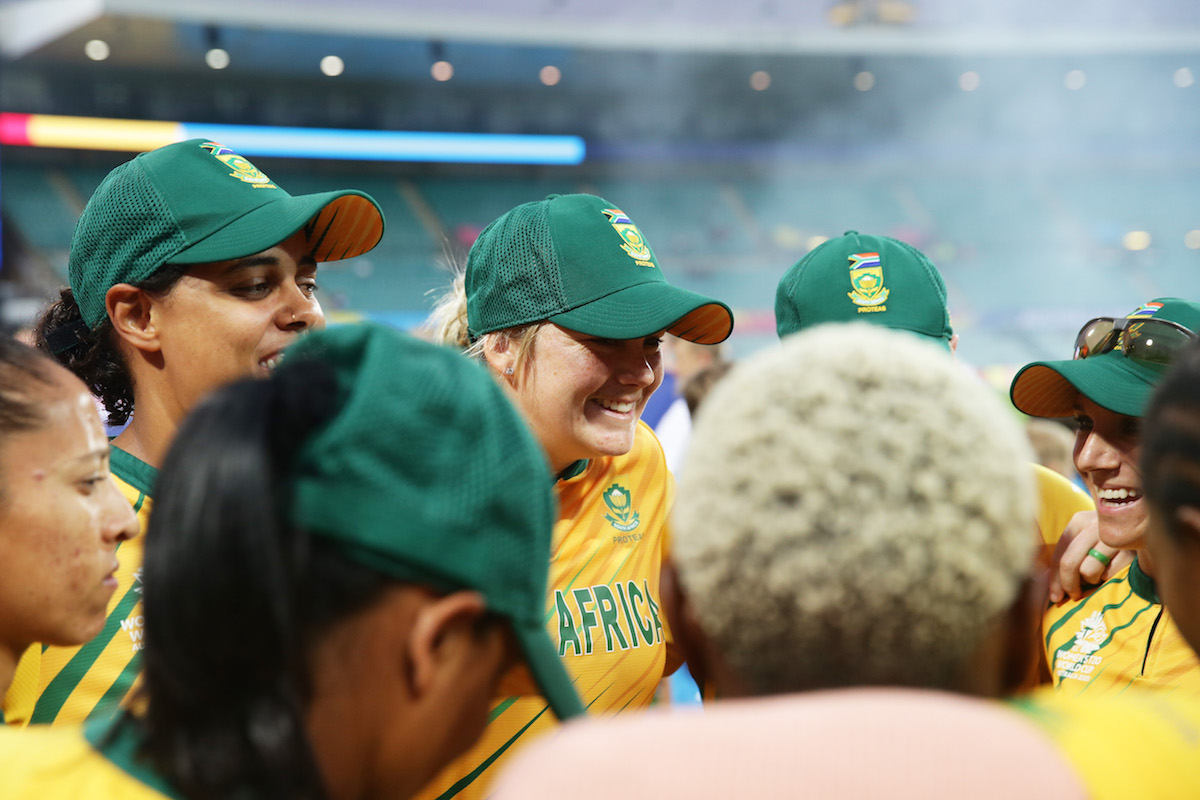
Setting the standard
By Khalid Mohidin
“For me, leadership is simply trying to get the best out of my players and understanding how I can do just that. Trying to motivate a group of women towards the same goal.” – Dane van Niekerk
Confident, Cunning, Brave, Inspiring, Talented, World Class, Strategic, Respectful, Wise, Passionate; should I continue?
There are so many powerful adjectives that come to mind when thinking about Dane van Niekerk. Yes, the word “Captain” trails her wherever she set foot, but it’s more than just a title that defines her as a leader.
Van Niekerk personifies the word “Leadership”. It is, therefore, fitting to lead with her as the cover story. But what makes her special is not only what she is like as a captain; It’s how she makes everyone else feel around her.
As a wide-eyed 16-year-old, Van Niekerk was in the changing room brimming, surrounded by some of her biggest heroes, anxiously awaiting her national debut on March 2009, during a World Cup match against the West Indies in Newcastle.
From there on out, it has been uphill for her, as she made strides as a player and inevitably a captain.
Despite her accolades – winning SA Cricketer of the Year in 2017/18 and 2018/19 – when I interviewed her on both occasions, she made sure to highlight her teammates as the driving force behind her performances.
For me, this is the No. 1 quality a captain should have – humility and a “team-first” attitude. She oozes this. She has led the Proteas Women to two major semi-finals (Champions Trophy and T20 World Cup) and on both occasions, it was when her team was the underdogs.
Her approach to the game and her vision for the side helped boost the belief amongst everyone in the dressing room.
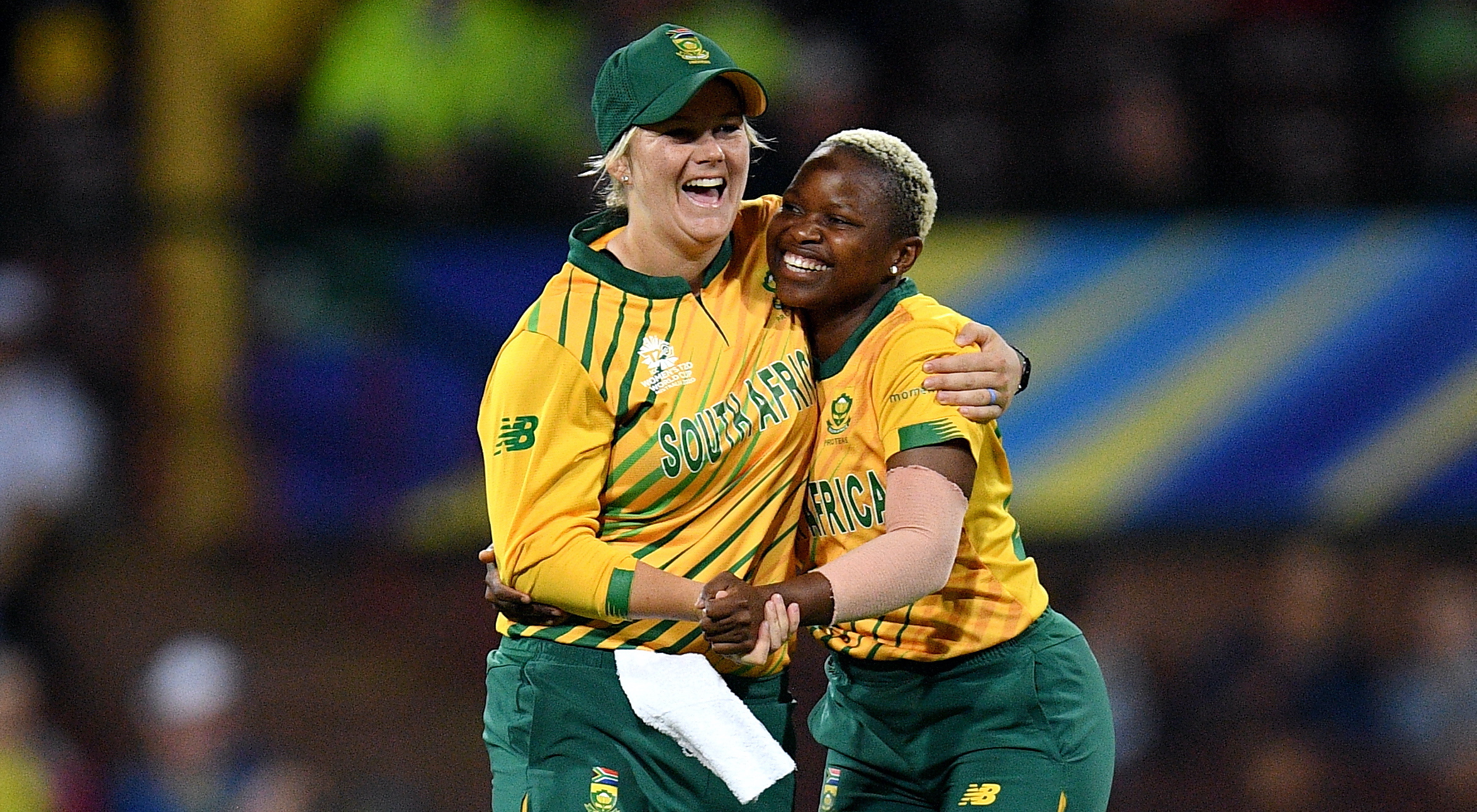
I can continue to speak about how I see her, but what do her teammates say about her?
“Dane is one of the most welcoming players in the team, she makes you feel comfortable in every situation, she is aggressive yet soft when it comes to helping out players that need help and she leads by example, she helps you reach for more as a player.” – Tumi Sekhukhune
“Every time Dane walks onto the field you know she's going to give 100%, and she's never leaving anything behind. She's a true leader for this team. She believes in her team like no one else does and is always up for a fight, leading from the front and as a youngster I know I can just follow her lead.” – Nadine de Klerk
A leader is not only judged by their behaviour in victory but mainly by their response in defeat. Van Niekerk’s words after rain crushed their T20 World Cup dreams, was admirable.
There was no doubt that she was hurting, yet she stayed calm, spoke her truth and made sure she congratulated the finalists and her team for their achievements.
But it doesn't stop there. Van Niekerk unknowingly is a beacon of hope for women in this country and beyond, who are struggling to find their voice and place in this misogynistic driven world.
This is clear when she was asked about her team culture.
“We’re a diverse team with older and younger players. Which helps with balance in the squad. Older players keep the youngsters grounded,” she said exclusively to Cricket Fanatics Magazine.
“Players like Nonkululeko Mlaba, who is only 19 years of age, always keeps me and the older players on our toes.
“We have created a culture that is based on respecting each other and playing for each other. We enjoy each other’s company.
“Our goal and what we stand for is to promote the sport for women to take up the sport. We’re all about making things better for the players who will come after us."
“We stand for South African women,” she said boldly.
“We fight that in a way that we know best, which is to play cricket. Being heroes is a massive thing for us. We’re sisters, we’re wives which is more than just being cricketers.”
This foundation that she has built is admirable. Her understanding of this so early in her captaincy, and at the age of 27, is vital to the prosperity of cricket in this country.
Van Niekerk is setting the bar and the standard that future leaders in this game should aspire towards. For me, she personifies "Leadership" in every form.
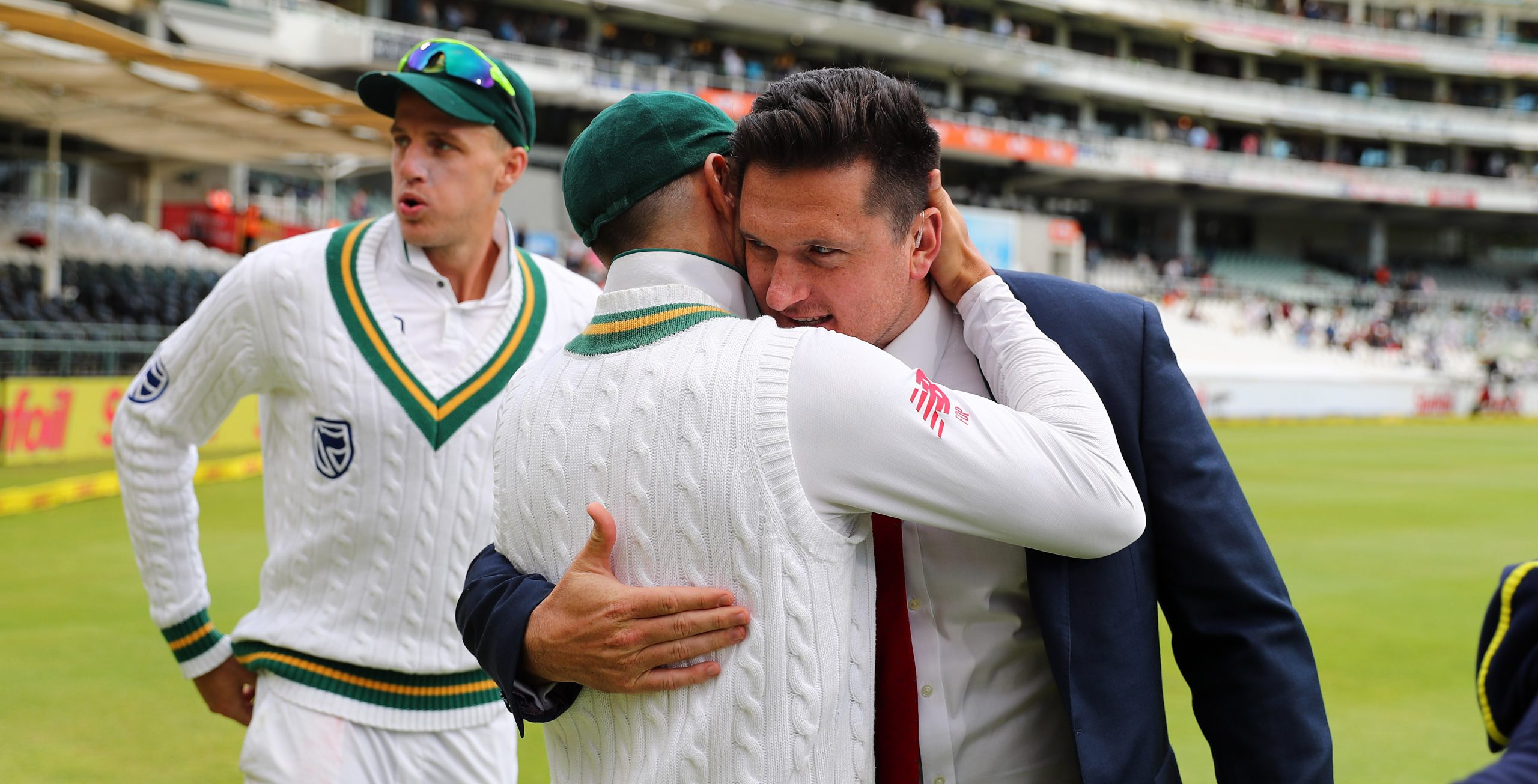
Portrait of a captain
By Chris Chiwanza
Have you ever noticed that in a circle of four, five, six or more friends there is that one individual who holds the group together?
In the absence of that one person, the group would not survive, and will just suffer a natural death, despite the obvious half-hearted attempts of the other members of the group to keep in touch.
It doesn't matter that the group was created because of shared interests, that the individual is the glue that binds the group, and they have more influence on every member than anyone else.
This is the same with families. They fragment when the glue-person is no longer in the picture, and family members retreat to the comfort and protection of their cliques.
So, what does this have to do with cricket?
Well, everything.
When we think of team leaders, captains, we rarely think of them in terms of their "binding the group" qualities. In today's world of superstar, celebrity and poster-boy captains, the first thing most people think about when visualizing the ideal captain is, first, their onfield abilities, then their ability to handle press conferences and the media – their charm and diplomacy – followed by their looks or fashion sense, or both, and their peerless wisdom.
Captains are supposed to be "natural born leaders", easy to pick out from a team line up because "they have that look, that thing" or from a team huddle because everyone hangs on to their every word, they're always in control, assertive.
Sports movies have forever been telling us that sometimes all a team needs to wake up and give their best, is a rousing halftime or interval speech, so, a captain ought to possess oratorical skills as well.
That is the package. The package that models the captain as "the face of the team" occupying a ceremonial role when it comes to directly influencing the mood of the team.
And we naturally assume that the team will follow their lead.
In cricket, we often hear of "the captain's knock", especially when the team finds itself in a very difficult position. The captain needs to "stand up" and lead the team out of the mess.
This is why it is seductive to think of your star player as the captain, the leader because such performances are assumed to have the ability to inspire better performances in the future.
Yes, it would help if the captain was also exceptionally talented. Yes, it would help if the captain was articulate and charming, as that would be a great source of PR for the team and the governing association.
But captaining a team is not limited to that, in fact, it is not about that. Captaining is no different from coaching, it relies less on onfield abilities, and more on peer management, interpersonal skills.
And so, while our eyes are always trained on whether the captain is leading from the front, a captain must also be able and willing to lead from the back.
This is because the captain is the servant of the team, there to make sure that each team member is in the right state of mind to perform at their best.
They are supposed to be able to be a water carrier for the rest of the team so that they can shine brightly.
They are there to serve their team members, and not to treat them like followers.
In a match situation where the captain needs three runs to get that century, and on the non-striker's end is a teammate needing four runs to get a half-century, while the team needs six runs to win, a good captain will score the winning runs and get the milestone. But a great captain would take a single and let the teammate have a chance at a milestone.
Of course, this is at odds with the belief in a superstar leader whose star eclipses everyone else's star.
Many speak of team members feeding off the energy of the captain. This is very valid, but limiting that energy to how many runs one scores, if the captain is a batter, is myopic.
This energy transcends on-field performances, as it starts off in the dressing room. Moreso, because cricket is one of those sports where the captain has a much larger role to play where players are concerned.
In November 1998 at the WACA stadium, in Perth, Jason Gillespie tore through the England line up, with four of his six wickets that day coming from only five balls.
In a Twitter exchange over the feat, Gillespie shared that the night before he had been struggling and questioning his game.
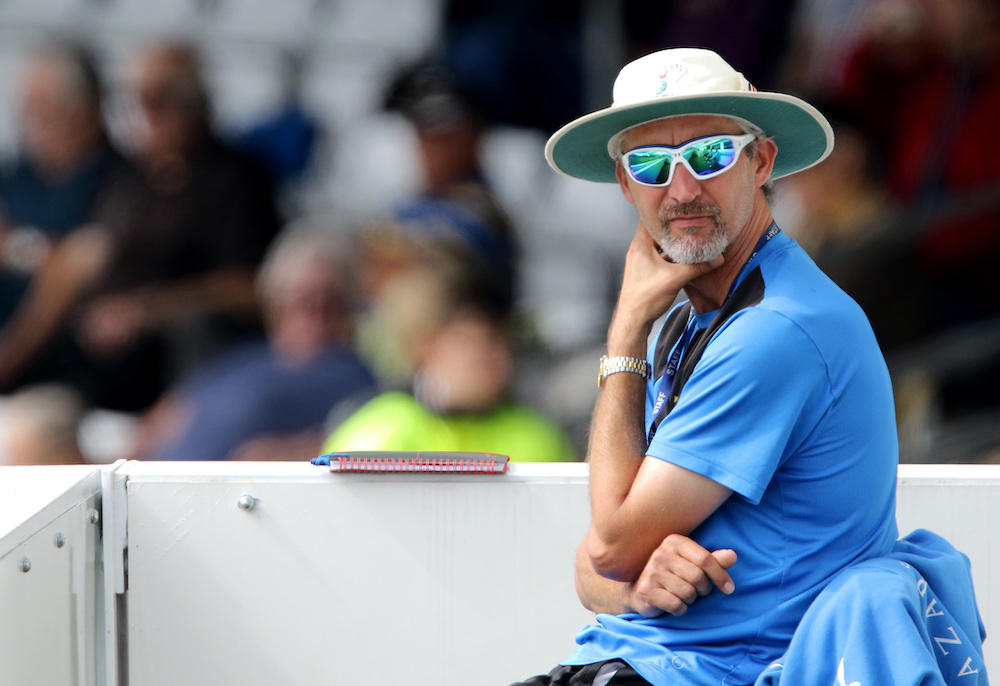
I asked him about the reasons why he had been having such a hard time, and what had turned things around for him to be able to walk out the next day and produce such a fiery, top-class performance.
"Had been having a few injuries over the last couple of years, so questioning whether my body was up to it. Struggled to get my line and length right the night before. Our captain Mark Taylor gave me a boost that morning which helped," Gillespie replied.
In an interview Mike Hussey shares how during the 2006 Ashes match at the Adelaide Oval, Ricky Ponting had a talk with the team that was the first step to securing victory in a match that was poised to peter out in a draw.
Everyone who was following that match was convinced that it was going to end in a draw. The players were convinced that there was no chance of a result, everyone except Ricky Ponting and their coach John Buchanan.
The next morning, before their team warm-up, Ponting shared this belief with the rest of the team. And as the rest of the team realised how much their leaders believed in this, the easier it was for them to believe in the idea too. The belief grew in the team like wildfire from a single spark.
Needless to say, Australia went on to win the match.
What Mark Taylor did with Jason Gillespie in 1998, his ability to transform his state of mind, and what Ricky Ponting did to Mike Hussey and the rest of the team in 2006, that takes a lot more than being the most charismatic or top run-getter or top wicket-taker. It takes leadership.
In both instances, the captains managed to get the other players to believe in themselves. Too often, when a superstar is a captain, he/she seeks for the team to believe in him/her.
In the 1980s the Chicago Bulls were known to play what was termed "Michaelball" instead of basketball when Michael Jordan was made captain. The team believed in Michael Jordan and focused on him to score the most points and win the match.
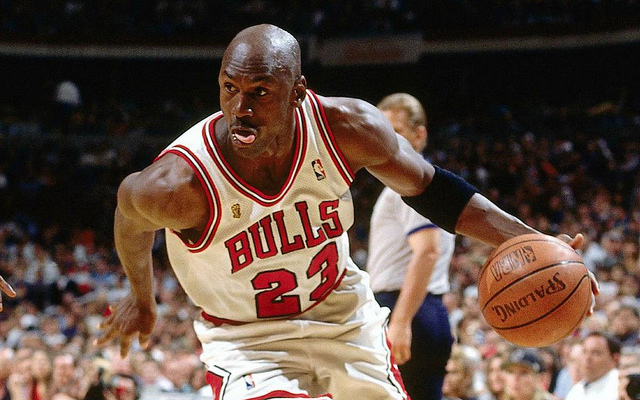
But that changed when Bill Cartwright was appointed as co-captain to Michael Jordan. Cartwright was widely respected by other players within the team.
They trusted him and felt safe being led by him, previous to his appointment, Cartwright had been an "unofficial leader" of the team.
Cartwright was affectionately called "Teach" by the Chicago Bulls players because he always made time to help and mentor them on their game.
As opposed to Jordan, who despite electrical ability, he could rebound, defend, dribble, dunk, score from any position on the court, despite his cocktail of skill and aggressive competitive nature against opponents, he failed to lead.
He had a sharp tongue that was feared by his teammates whom he often needled and belittled. It has been reported that when Jordan lost confidence in a player, he would lobby the Chicago Bulls to get rid of him or alienate a player on the court by directing other players to not pass the ball to him.
Jordan had public support and adoration, but Cartwright had the dressingroom respect. Bill Cartwright inspired the players around him too, "Play until there's no game left in your uniform."
It goes without saying that there are always going to be players who are technically better, superior to others in the team. But not all of them possess the ability to captain the team.
These players often become the technical leaders, the ones other players look up to technically. A good captain knows how to draw such players into his leadership group, and work with them in building a strong united team.
In an interview with The Super Over Podcast, former Proteas captain Faf du Plessis shared that in the early years of his captaincy he was more of a tactical leader because his strengths were on the tactical side.
As a result, he had to rely on JP Duminy's abilities as a communicator to effectively communicate with teammates. And even after he had developed that side of his leadership abilities, he still valued and made use of the unique leadership attributes his fellow teammates brought to the table.
A great captain will develop or recognise other leaders in the team and make use of their abilities. Not every leader within the team should be a captain. David Miller said it best when he remarked, "I don't have to be the captain to take on a leadership role."
The captain is the person who is responsible for getting everyone working as a unit, as a team, not as 11 talented individuals.
And because the captain is always on the field with the players, he/she is the one always ironing out the chinks between players, smoothening things and getting everyone on the same page. The captain is the glue that binds the team together.
The captain doesn't only have to lead, they also have to manage. Unlike many other sports where the coach had greater control and input on what happens on the field of play, in cricket, the captain has greater control. The captains decide on the majority that happens on the field from fielding to batting order.
The captain is the guardian of "team spirit", the guardian of team chemistry because they inspire everyone to follow strategy, and to play for each other because that is what the captain desires.
When you have the right captain in place, everyone understands and accepts their roles and put their hearts into fulfilling them to avoid disappointing the captain.
The team with the right captain doesn't necessarily always go through a slump, performance-wise, each time the captain is not playing well.
Yes, there are times when the slumps might coincide, but it should not be a given that when the captain falters the whole team falls, as the team would rally around their leader and play for their leader.
The right captain is not the player who will just go to battle for his/her troops, but the player that the entire team is ready to go to war for.
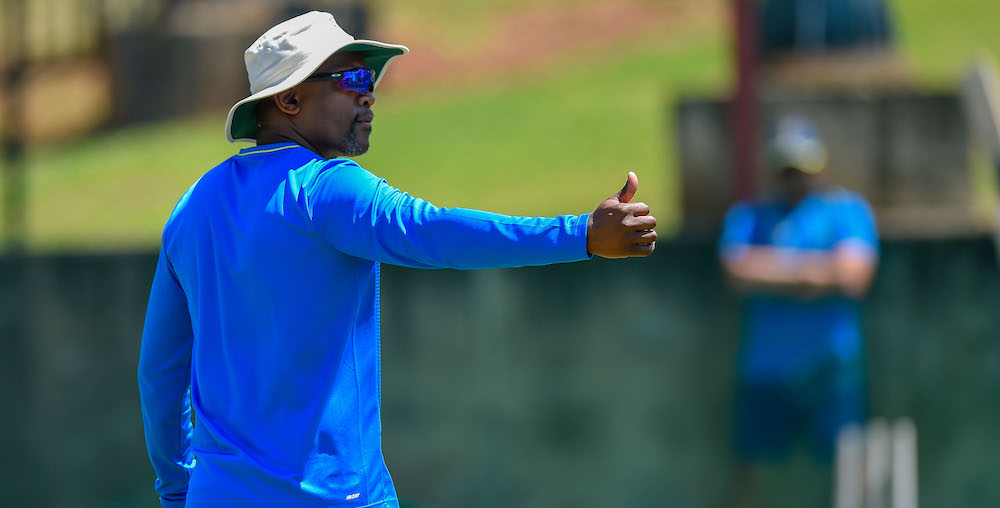
TEAM CULTURE, ENOCH’S WAY
By Ongama Gcwabe
Proteas Assistant coach, Enoch Nkwe outlines his winning methods at the Lions and building team culture in the Proteas team.
It took Enoch only one season to win two out of three tournament titles in South African domestic cricket. That success, accompanied by an amazing campaign with Jozi Stars, everybody knew there was something special about Nkwe.
In an exclusive interview with Cricket Fanatics Magazine, Enoch speaks about his time at the Lions and how he was able to save a sinking ship within a year,
“I realised that there was quite a lot we needed to change at the Lions and we needed to close some gaps,” he said.
“I looked at the Barca way, the Ajax way and some of the [successful] businesses. I looked at how they run their businesses over a period of time.
“We wanted a simple identity that would be transparent from the top to the bottom and speak the same language. Similar to the way Barcelona has done.
“We needed to create a very strong identity with our first team and then filter it down.
“Because I was in the system before I could see where the shortfalls were and I could come in and actually tackle those gaps.
“The one thing I felt they needed was some sort of a strong culture, strong identity and direction. What they can actually achieve and what sort of a legacy they can leave behind,” he concluded.
The successful All blacks team under Richie McCaw was successful because they had divided responsibilities instead of the centrally focused distribution of power.
They divided responsibility between the management staff and the players. The more experienced players established a leadership group where those players had to behave in an exemplary way.
The Proteas are also heading in that direction in all three formats. Last season we saw responsibilities being spread out to De Kock, David Miller, Bavuma and Van der Dussen.
“We’ve been working hard on the leadership group to drive certain systems within the team environment,” said Nkwe.
“I strongly believe that, where we are with the likes of Quinton and Temba Bavuma, the Rassie’s and Faf, we’re fine-tuning our blueprint in terms of different formats.
“One of the things we wanted to do before going to Sri Lanka was to have a culture camp. Where we reflect on what happened this season and then we come up with what speaks to us as a team and how we can influence the South African system going forward.
“We speak a lot about honesty, being vulnerable and being able to create a safe space for us. We are still going to have a culture camp where we look at the season in terms of the key elements that worked for us on and off the field.”
Although Enoch Nkwe didn’t receive a contract extension as the top man at the helm, he is aware that he still has an opportunity to build strong cricketers for South Africa.
“I’m happy that I’m still part of the Proteas system. Like I said in terms of the Lions, it’s not something that can be achieved over a year, I think it’s something that can be achieved in a three to five year period,” he said.
“Hopefully going into this coming season we’ll start to see some small changes and we start building strongly, strengthening our culture as a team.
"If this WC happens, hopefully, we win this one and win the big one which everybody is going to look out for in 2023.”
SUNE LUUS: CAPTAINCY IS SOMETHING I ASPIRE TO
By Naeemah Benjamin
Sune Luus has the fight, passion and maturity that could earmark her as a future leader of the Proteas Women.
Let's go back to the backend of 2019. South Africa Women returned home after being outmuscled by India at the end of 2019. Although it was a tough tour to India, there were some positives to take from the experience.
Why it is relivant is, because situations like those shape players and builds character.
There were many opportunities given to the youngsters who were allowed to put their hands up and show what they are capable of.
In the absence of Dane van Niekerk, Luus was stand-in captain, a challenge that she stepped up to successfully.
“Captaining your side, is always a great honour and privilege and it’s something I aspire to do in the future,” Luus revealed.
“But we’ll see how it goes. At the moment we are being led by an amazing captain and she’s doing an great job.”
If you needed any more confirmation that Indians love their cricket then you certainly got it during the tour.
Both the T20 Internationals and One-Day Internationals were packed to capacity. The crowds were roaring and cheering and not just for their team.
It was an unforgettable experience for the Proteas Women, who have not experienced that sort of unconditional support before.
According to Luus South Africa could take notes on how to show up and get behind their teams, in particular, the women’s team.
“It was a great experience to play in front of almost twenty thousand people. I don’t think most of us have done that before and it was something to get used to,” said Luus.
“They are fanatic about cricket. I mean, they weren’t just supporting India. They just supported cricket in general and that was very good for the world to see.
“What India did well was, they put up a lot of posters everywhere we went and it was televised games as well. But I think the passion Indian people have for cricket, whether it’s men’s or women’s cricket, is the huge difference.
“In SA, from a marketing perspective we could play a bit more on television if that’s possible and also have a few more posters up to make more people aware, but it’s small things.
“At the end of the day, we got to win to get people to come out and watch us so that’s the main thing for us.”
Being a professional cricketer comes with an overwhelming schedule and itinerary.
Touring, in particular, can be a taxing experience, and Luus revealed what she does to keep the balance in her life.
“I think a support structure is very important,” she explained.
“Touring away from home most of the time is hard, but having those people back you, support you and just send you love, that’s all that matters.
“You can have a tough day at the office but at the end of the day, it’s what you go home to and who you go home to.
“There’s no such thing as an off-season nowadays because during the off-season you have to train just as hard and get fitter. But I enjoy spending time with friends, obviously maintaining a social life is good as well.
“I enjoy playing tennis and doing tons of outdoor stuff like trail runs with my brother and his wife.”
At first, women’s cricket in this country wasn’t professional and many never thought about it as a potential career path but that has changed.
Luus ended our conversation by leaving some advice for young cricketers looking to embark on this journey.
“To young cricketers out there, cricket is becoming a thing especially women’s cricket in the country and all over the world,” she concluded.
“It’s a career option and if it’s your passion then definitely go for it and continue living out your dream.”
Advertisement
Ezra Poole's Online Wicketkeeping Academy
Learn how to Master The Craft of Wicketkeeping Without Having to Hire a Full-Time Personal Coach.
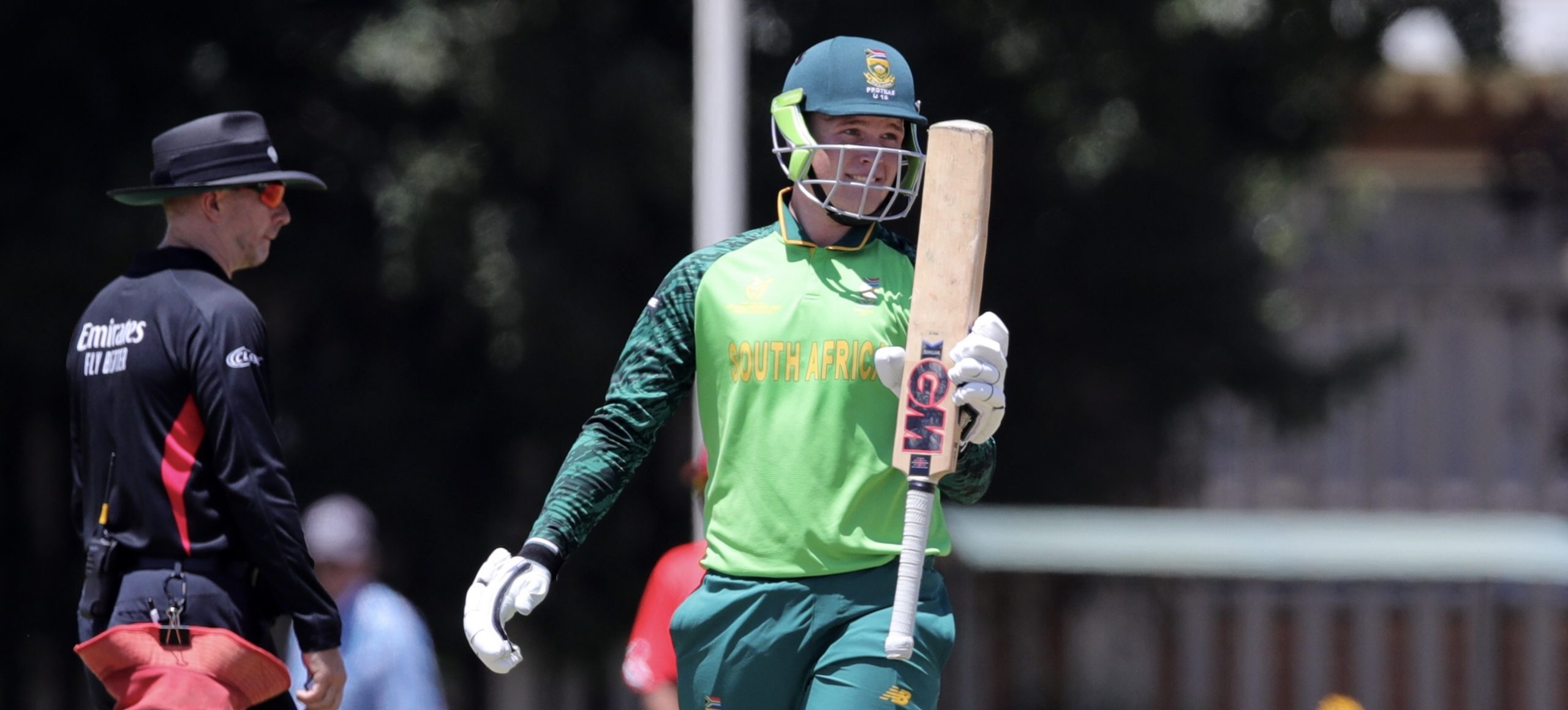
RISING STAR: BRYCE PARSONS BORN TO LEAD
By Abhai Sawkar
The 2019/20 U19 World Cup in South Africa was the perfect platform for youngsters worldwide to announce themselves on the centre stage.
Bryce Parsons, a 19-year-old allrounder known for his clean hitting as a left-hander and canny left-arm spin, took charge of the hosts’ side. While they reached the quarterfinals, it’s been an experience to savour.
To keep it short and sweet, cricket has been the bread and butter for Parsons. He longed to play the game with friends every day after school, and that same burning passion has fueled his quest to improve and achieve more.
“My earliest memory playing cricket was grade 1 or 2. I remember sitting in class waiting for the day to end so we can all get out on the field and go play mini cricket,” recalls Parsons for Cricket Fanatics Magazine.
“Those moments were the building blocks for my love of the game.”
Parsons is an alumnus of the eminent King Edward VII High School, which has a well-established track record of producing multiple greats of the game.
Having risen to the top fairly early on, he soon built a reputation as a dedicated and reliable team player, and was often in the limelight.
He enjoyed the stiff competition and expertly put together some groundbreaking innings. That was a telling omen of what was to come in the future.
“I went to KES, and long story short, I always enjoyed playing school cricket. At the time, first team cricket was the highest level of cricket I played so it always felt competitive against rival schools. I have a few good memories from playing school cricket," he explained.
"First of all, my two double hundreds were individually my best performances but the one that stands out the most was our team winning the Johnny Waite trophy and then going on to represent Gauteng at the SA school’s competition.”
Like most youngsters with prodigious talent, Parsons had the opportunity to feature in the Coca-Cola Khaya Majola Week in the 2018-19 season. The event comprises teams with bolting young players from across the country.
Parsons missed the most recent edition due to injury, but it was a key stepping stone and confidence builder. His meteoric rise and maturity at the highest level propelled him towards national captaincy.
“Unfortunately during the last Coca-Cola Khaya Majola Week I was injured with a slipped disk in my back and was unable to be apart of the competition but I went to the previous one.
"Fortunately for me, I did well during the week –won Player of the Week and was picked to play in the SA schools team.
"The event shaped me as a cricketer as I was young and didn’t know what to expect and facing the likes of... at the time the SA U19 bowling attack was a huge learning curve for me and my development.”
Parsons’ early times as the U19 skipper weren’t quite the optimal beginnings – the junior Proteas suffered a heavy defeat at home against Pakistan, but his charisma and highly-rated leadership skills ensured that he’d take on a much more serious task: leading the side in the 2020 U19 World Cup.
Initially, it was a lot to process, but he was as ready and excited as he could be. From time to time he had to deal with pessimism from outside but that hardly perturbed his strong focus and work ethic.
When it comes to leading the side, the main priority for Parsons is familiarizing and communicating with his teammates well.
During the group stage, there were a couple of tricky games, especially against Afghanistan. But the determined and positive attitude helped the South Africans pull through into the knockout stage.
“Hearing that I was going to be SA U19 captain at the World Cup was a surreal moment for me, it was kind of unexpected after our 7-0 loss to Pakistan the series before under my captaincy but the feeling was inexplicable. I felt a huge honour and privilege to represent the country and be the leader of the side," he added.
“My usual approach around leading a team is primarily around team culture and try forming a sense of brotherhood between the players so we can get to know each other well and see what areas suit each individual the best. During the World Cup, I didn’t think we were that far off.
"We gathered a lot of momentum leading into the quarters and we were in a good space, unfortunately, we lost to the eventual winners of the competition but the experience was unbelievable.
"Personally for me what I found the most challenging during the competition was the outside noise there was a lot of media hype there was a lot of negative talk and fronting up after games was for me the toughest part.”
Despite coming up short in the quarterfinals, Parsons has plenty of gratitude both for the experience and for the friends he’s made along the way.
Besides, he thrives during high-stakes situations and has often risen to the occasion with his big-game mentality. Against Canada, he blitzed an ebullient 121 from 91, and finished as the highest run-getter for his side in the U19 WC.
“I have always lived by the saying ‘pressure is a privilege’. Many people dream to be playing where you are so I just try to go out there and do what is for me in this position. I have always relished the ability to perform on the big occasion.”
As much as he enjoyed his time in the tournament, Parsons values every moment, since it’s a great incentive for future challenges.
The loss in the quarterfinal may have hurt, but the end is just a new inception of gradually making a mark in the professional scene.
“The U19 World Cup was just a huge learning experience in itself throughout the whole competition; it was uncharted territory for us all and we learnt so much along the way that will hopefully mold us into better cricketers in the future.
"Playing against some really strong opposition during the tournament you got exposure to some of the world’s best youngsters in the warm up games and the series before we played against the likes of Naseem Shah and Haider Ali who are currently playing for Pakistan already.
"This shows us the standard and levels you are required to be at. From a team perspective, the culture and brotherhood we had in that team was unbelievable the way the boys gelled from the start was incredible and bonds we will be able to keep forever.”
Before the U19WC, Parsons made his professional debut for Gauteng in T20 cricket, and following the U19 WC, he’s had a taste of the other two formats as well.
It’s only been a sprinkling of chances for him, but more importantly, he’s soaking up all the progress he’s made.
There’s no doubt he has the talent and ability to propel forward, but moving from youth to professional and eventually to franchise level will require a strict and methodical attitude.
“It has been a big season for me from playing in the World Cup to debuting in all formats for Gauteng, it’s been a big learning curve already even after just a couple of games you get to play against some experienced cricketers who have been around the circuit for a long time and you get to test yourself against them. It’s been a decent start but hoping to kick on from here.”
Parsons has often hailed the current limited-overs skipper as a major source of cricketing inspiration, who is also an Old Edwardian just like him.
The way Quinton de Kock soared to the top when he was barely in his early twenties is something Parsons is looking to emulate as he progresses forward.
“My idol is Quinton de Kock. He has been world class for South Africa for a few years now, maybe some bias coming from me seeing as though he is a KES boy too but he is world class.”
For the upcoming season, entering the big leagues is the main aspiration for the 19-year-old.
Now that he’s graduated from a U19WC, he’ll be competing with and against some of the brightest and the most seasoned cricketers in the provincial circuit.
He has ambitious aims, but he’s taking it one step at a time, with consistent performances for Gauteng being the immediate goal to conquer.
“I have put a few goals in place for the 2020-21 season but we will see where it goes obviously would love to make my lions debut and maybe a Mzansi Super League contract as one of the U21 players during the season.
"But at the moment I’m just focused on taking it one step at a time and performing for Gauteng and help contribute to having a successful season.
"As far as my plans are concerned, obviously at the moment in these tough times it’s been hard but I’m trying to improve fitness wise and staying game-ready whenever we may get out on the park again. I need to be ready.”
With the lockdown measures gradually easing up and the improving prospect of cricket coming back in the near future, it’ll soon be back to business.
Despite the struggles, Parsons’ proactive mindset and penchant to take up the extra responsibilities is a testament to his immense potential.
The rise to professional level is a marked increase in difficulty, but enjoying the game in tricky circumstances has become a well-developed habit for the youngster.
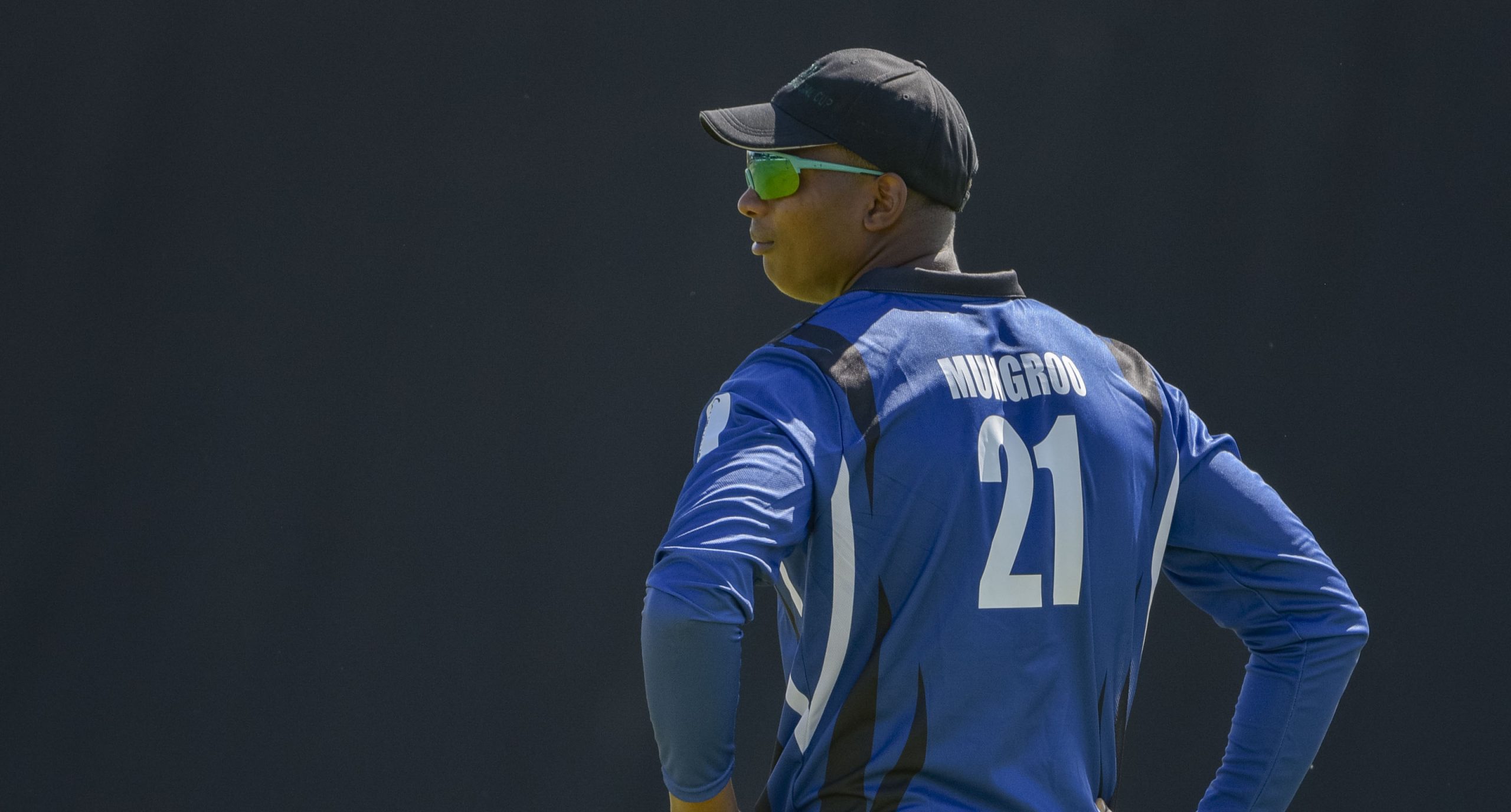
OFF THE FIELD WITH KERWIN MUNGROO
By Nabeelah Fakier
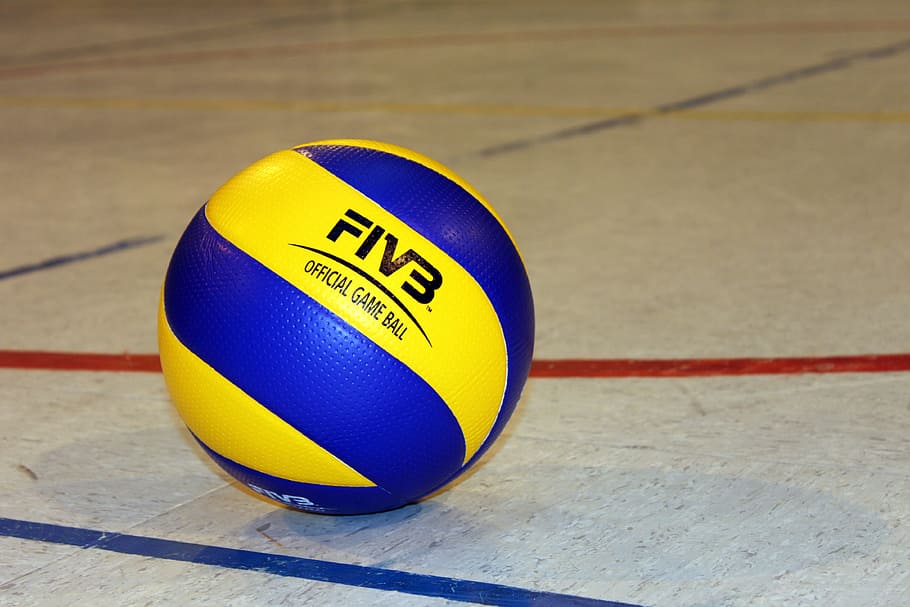
Is there any other sport you played besides cricket?
Yes, I played soccer and volleyball. I also did athletics and do fishing.
What was it like growing up in Ladysmith?
It was tough but I loved every bit of it. I am who I am because of the tough conditions.
Who was/is your role model?
My brother Astin for sure.
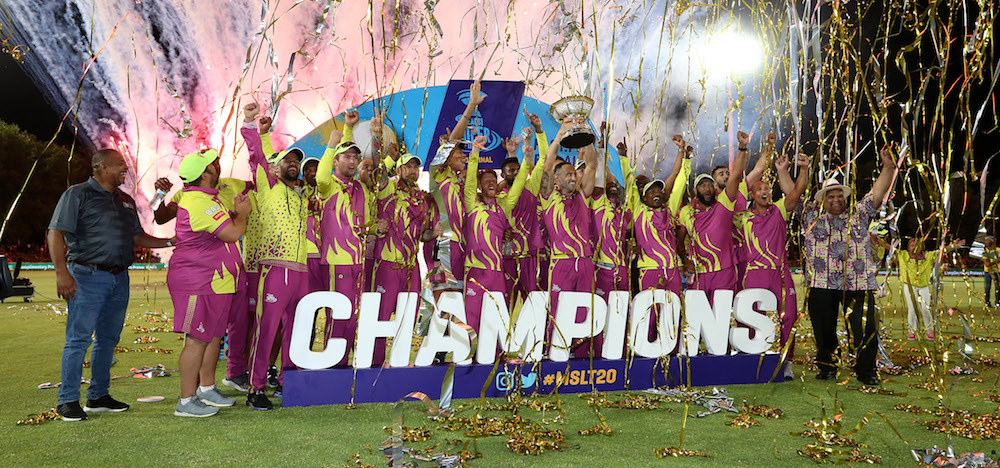
You’ve been with the Paarl Rocks for the past 2 seasons, what was it like for you, and what was being crowned champions like?
It was really awesome, enjoyed every bit of it, an even better bunch of guys. Winning is always nice, but winning a championship is special.
It's always nice putting a smile on the faces of the Paarl people, whose support is unbelievable, so that’s a good feeling.
Who’s the toughest batsman you’ve ever faced?
Rassie van der Dussen.
What are the 3 top places to visit in Ladysmith?
My house, my house and my house. I only chill at home, and I love it.
What’s your favourite movie, and why?
Blood & Bone, just love action when the main actor doesn’t get hit.
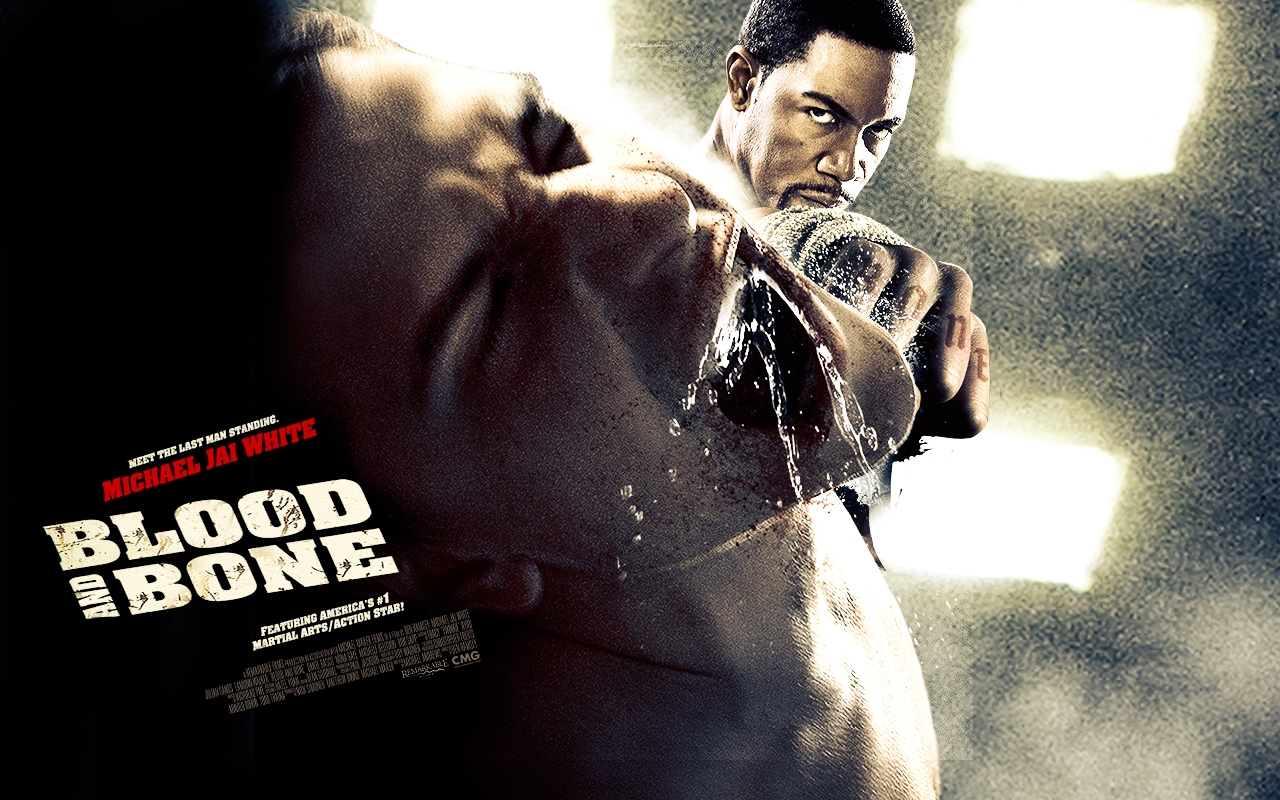
What’s the 3 most played songs on your playlist?
Chicago, Toosie Slide and God’s Plan, all by Drake.
What are your hobbies?
Fishing and chilling with my friends.
If you could have any super power, what would it be?
Reading people’s minds.
Which Dolphin’s batsman’s wicket would you love to take?
Sarel Erwee, just to cherp him afterwards.
What’s your dream ground to play on?
Adelaide Oval.
If you were stuck on a deserted island, and you only had 3 things with you, what would it be?
Lighter, food and water.
What’s your favourite TV/Netflix show currently?
Empire.
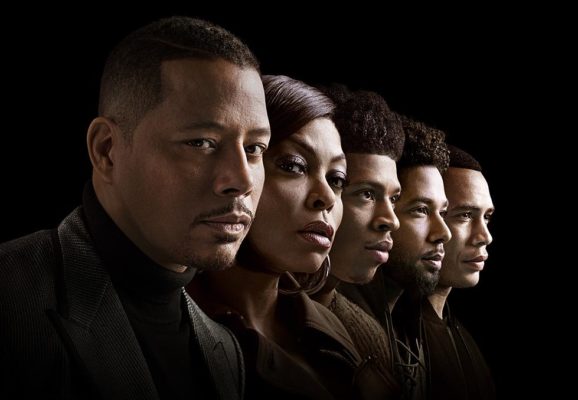
Besides cricket, which other sports do you watch?
I enjoy soccer.
What’s your most memorable bowling spell?
3/29 in the MSL against The Jozi Stars.
If you were President, what would your first order of business be?
I would bring back the death penalty.
Who’s your favourite team in the IPL?
Chennai Super Kings.
What’s your favourite meme that always gets you laughing?

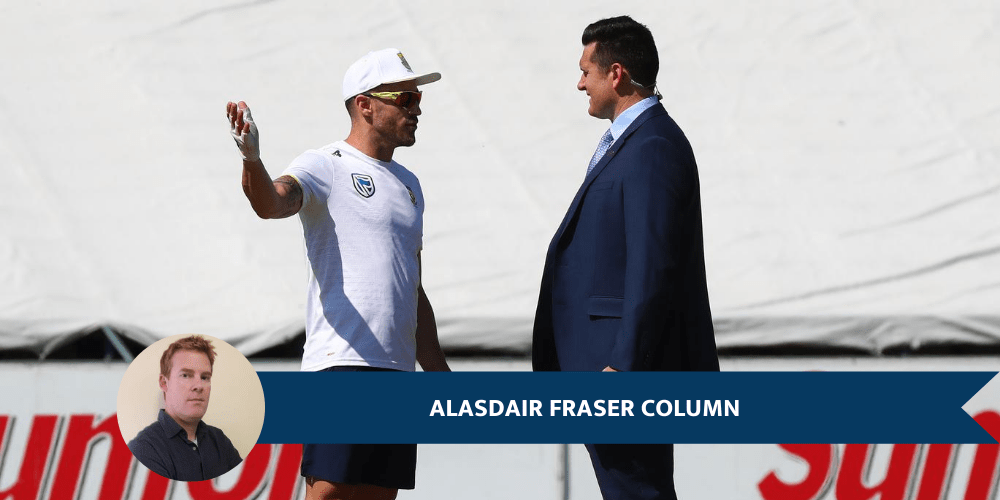
Strong Leadership key to a successful Test side
By Alasdair Fraser
It is no coincidence that some of the most successful Test teams have always had a strong leader who has been at the helm of the side over a long period.
When I pause and reflect on the most powerful Test units in the past 50 years, I immediately think of the bespectacled Clive Lloyd rallying his well-oiled Windies machine in the late-1970s and early-1980s.
They conquered all and sundry, ruling the game in its purest form. Later we saw Steve Waugh overseeing a magnificent era of Australian cricket before Ricky Ponting took over the reins.
From a South African perspective, though, two captains stand out for me: Hansie Cronje and Graeme Smith. Both formidable competitors and strong leaders who always led from the front. The changeroom knew their place and the roles they were expected to fulfil.
It is no coincidence that under Cronje and Smith’s watch, the Proteas enjoyed highly successful winning streaks in the longer format over a sustained period, while the former was in charge of a well-drilled ODI outfit that was brutal in its approach and one run away from potentially being crowned world champions in 1999.
Cronje’s path was helped with the Grey Bloem connection that he shared with Kepler Wessels. It was Cronje that was named vice-captain under Wessels when the promising Free Stater was the youngest player in the squad.
He took over the captaincy role after the 1994 tour of England at the age of 24, which no one had a problem with at the time, and although there were a few bumpy rides in the earlier stages, Cronje conquered every single Test nation in a series except Australia.
Beating a star-studded Pakistan outfit away was nothing short of exceptional but the 2000 Test series win over in India was Cronje’s crowning achievement – not even the mighty Australians at the time were able to achieve that mammoth feat.
Forget about the match-fixing scandal that came straight after that impressive triumph, Cronje’s leadership skills were never doubted and often admired as forward-thinking. Cronje was 29 when the saga broke, and it would have been interesting to see what his record ended up being had he captained the Proteas to 100 Tests.
Cronje’s record as captain reads as follows: Tests: 53, Wins: 27, Lost: 11, Tied: 0, Draws: 15, Win Percentage: 50.94%.
Smith’s record doubles that of Cronje’s: Tests: 108, Wins: 53, Lost: 28: Tied: 0, Draws: 27, Win Percentage: 49.07%
That win percentage is one to look at and if you study Clive Lloyd, Steve Waugh and Ricky Ponting you’ll see win percentages of 48.64%, 71.92% and 62.33% respectively.
Virat Kohli’s stands at 60.00% – a clear indication, given India’s dominance, of the importance of having strong leadership at the helm.
Smith’s path was similar to Cronje’s in many ways, however, he was not afforded the same power as Cronje and was forced to live in the long shadow of the match-fixing saga. It would have been interesting had Cronje not tragically perished in a plane crash to see how it may have played on Smith’s mind.
Smith announced his arrival as captain with a truckload of runs – the perfect statement and answer to his initial critics, who deemed the 22-year-old as too young to captain a Test side. But Smith will be the first to acknowledge that he learned on the job for his first three years as skipper.
That learning went way into 2006 and the steep curve flattened after Sri Lanka taught the Proteas a major cricketing lesson. By then, Smith as already building a side with fresh blood in Hashim Amla, Dale Steyn, Morne Morkel, AB de Villiers, Ashwell Prince, JP Duminy and to a lesser extent Paul Harris, whose role in how the Proteas pace attack strategically bowled as a unit should never be downplayed.
Although not half the cricketing brain that Bob Woolmer was, Mickey Arthur allowed Smith the same freedom that Woolmer afforded Cronje to show true leadership and give 100% responsibility to own the captaincy role and manage his troops. Yes, there was a clique but all great Test teams need that changeroom nuance in order to ‘click’.
From 2007 to Smith’s retirement, the Proteas dominated Test cricket and became No 1 in the world across all formats in early-2009 and came agonisingly close to emulating Cronje’s cricketing feats in India on two occasions. The 2012 tour to England was Smith’s second Everest before he tasted a second series win away to Australia later that year.
This has been followed up by Faf du Plessis, who has been harshly judged at times (in his 36 Tests as captain, Du Plessis’ win percentage sits at 50%) and was the first skipper in South Africa’s cricketing history to captain the Proteas to home and away Test series win over Australia.
Perhaps it’s not too late bring Du Plessis back as captain of the Proteas Test side. His record eerily mirrors that of Cronje and Smith.
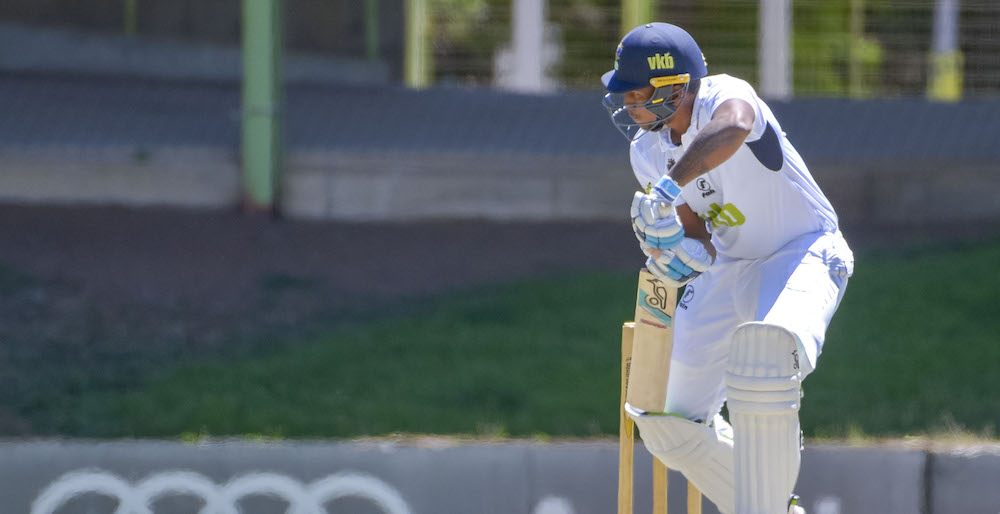
The Comeback Kid: Wandile Makwetu
By Daniel Orsmond
“My earliest cricketing memory is from when I was 6 years old. My parents bought me a cricket set for Christmas which I took to school and played with my friends.’’
Six years later, Makwetu featured in his first National Standard Bank week for the Gauteng U13 side.
He would continue to do so throughout high school and would go on to play Khaya Majola Week for three consecutive years, and the SA U19 side from 2016-2018.
"My first experience as captain came in my matric year with the Gauteng U19 side’’, said the young keeper-batsman exclusively to Cricket Fanatics Magazine.
After school, and shortly after the U19 World Cup in Jan/Feb of 2018, Makwetu made the short move to Pretoria to study at Tuks and to join the Titans academy.
Makwetu impressed at the academy and thrust into the Northerns set up to make his debut by March of 2018 and his Titans debut 10 months later.
Makwetu’s time in Pretoria was short-lived.
"The decision to move to the Knights came down to game time.
"An opportunity opened up in Bloemfontein to get that playing time that I was looking for.
"I don’t regret moving to Pretoria at all, it just wasn’t the right fit for me at that time.’’
Matters changed drastically for the young keeper-batsman at the Knights.
‘’It all came down to belief in my ability," he continued.
"It was great getting a couple of good scores very early on. I felt and appreciated the backing of the captain and coaches at the time.
"I’m happy that I was able to perform the way I know that I can perform.”
After three games for the Free State, Makwetu was thrown into the deep end for the Knights.
He was handed the gloves and asked to bat at six by his captain and coach after having missed the first three games of the season through injury.
Once given the chance to apply his trade, the youngster amassed 342 runs in five games at an average of 57.00.
Those 342 runs included a magnificent 99 on debut (against a Titans attack consisting of Lungi Ngidi, Dayyaan Galiem, Tabraiz Shamsi and Junior Dala) as well a gritty 101 against the Cobras after a top-order collapse.
If that wasn’t impressive enough, the youngster picked up domestic Newcomer of the Year at the CSA Awards.
He has been tipped as one of the best glovemen on the local scene a and although he's only 21, with a handful of franchise games under his belt, the youngster has undoubtedly caught the eyes and ears of local cricket fans, and perhaps a national selector or two.
The maturity with which he played was phenomenal and his ability to read the situation of a game and change his approach was even better and arguably unseen for someone of his age.
It was this level of maturity and the way he carried himself amongst much more experienced and established players that lead to the Knights ultimately naming Makwetu as the stand-in captain of the One-Day Cup side in the absence of Pite van Biljon who received a national call-up.
“I didn’t expect to get the captaincy when Pite was away with the Proteas and later during the season when he was injured, but it was a challenge that I was open to when the coach and convenor of selectors approached me."
Makwetu is very assertive in his approach to batting and keeping, and it appears to have filtered through into his captaincy, possibly as a result of having played under the likes of Tony de Zorzi (2016) and Raynard van Tonder (2018).
‘’I enjoyed their captaincy. They’re both deep thinkers and although they like to do things their way, they are always open to suggestions and I found it refreshing to play under guys that are positive thinkers and like to play cricket on the front foot," he explained.
"I’ve also learnt a lot from Pite, he’s tough but fair. He plays the game hard. He’s old school. He’s stern but always makes you feel welcome and part of the side".
One might think that a change of captaincy in the middle of the season may bring uncertainty in the team culture, their gameplans or perhaps the way they go about their business in general.
One would be wrong in this case.
‘’At no point, I didn’t feel like I ‘took over’. I just needed to take care of the job for a few games," he continued.
"The timing was great, both for me and for the team. I had some runs under the belt, we had gained some momentum after a couple of wins and we were all clear in what it was that we wanted to achieve and how we wanted to go about achieving it."
Captaincy aside, and although Makwetu was excluded from the Proteas 45-man ‘high performance’ squad, the cry for Proteas keeper Quinton de Kock to drop the gloves and accept more responsibility with the bat by shifting up the order could potentially see the youngster get an early look in.
He would need to compete with the likes of Rudi Second, Kyle Verreynne, Sinethemba Qeshile and Heinrich Klaasen, who too have all made a decent claim to be considered for the national red-ball squad, but given the degree to which he has improved as a cricketer in a single season, there is no reason why Makwetu could not be knocking on that national door in the near future.
UNLOCKED SERIES: “It's nice to see everyone come together” – Lungi Ngidi
LEGENDS WITH RAVI | “Baboo vs Benaud’s Australians!”
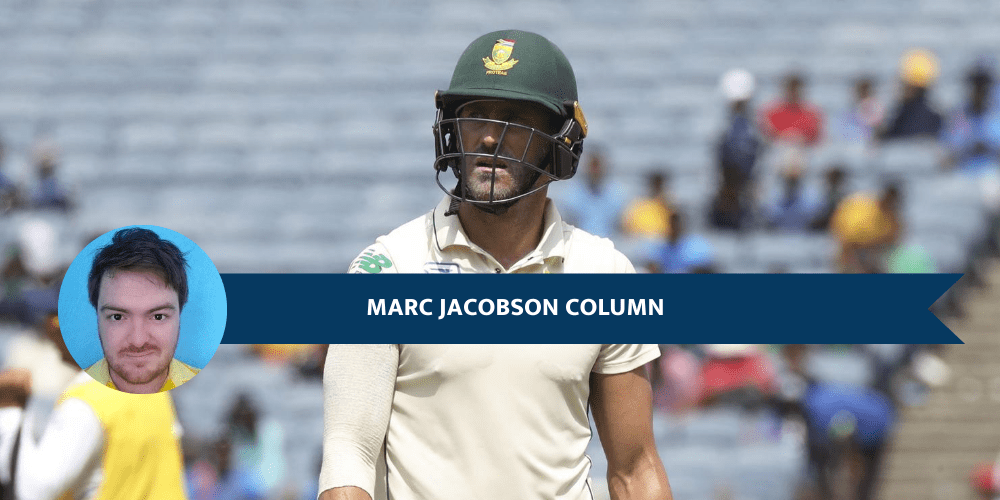
Success is garnered by strong leadership
By Marc Jacobson
Cricket can, at times, not be so gallant if a team’s ducks are not properly aligned or appropriately led.
This sport, unlike any other team sport, can be the most precarious test any sportsman could consider playing. As a collective game, it can be lonely out there in the middle, facing a threatening bowling attack, supported by nine fielders and a stalking wicketkeeper.
The batsman’s lone efforts are enveloped and menaced with every delivery and for any opportunity of his chanced dismissal. And, while all his teammates sit up in the team box with his partner only being able to watch on from the other end, the onus is up to the man with the bat to evade any sort of imposition.
Likewise, the bowler, who stares the batsman down and hopes to bowl that ideal delivery with the perfect bounce or swing, holds his whole team’s defence accountable for those six consecutive deliveries at a time.
It can even be a lonely place for a fielder, who would sometimes stand-alone, among what seems to be bare wilderness, while gawking a high aerial ball and anticipating it to land according to how he “plans” it to. While the fielder looks only at the ball, everyone else looks only at the fielder, for whom they contemplate either success or failure.
If a football player misses a tackle or overcooks a pass, he can still rely on his defenders, goalkeeper or attackers to salvage the situation. If a player makes a mishap in rugby, he can still rely on his team’s scrum or line-out strengths to rescue the scenario, as well as on his teammates to make cover tackles on defence.
In basketball, his teammates are there to capitalize on rebounds, with collective defensive systems also playing an integral part. And the list goes on. . .
Cricket is a different beast in this respect. It can be a lonely game out there, and it could seem as individualistic as can get, with personal performances always being put to the test.
This is where leadership can play a vital role. Without sufficient leadership, the corridor of uncertainty can become your proverbial reality.
We’ve all seen where leadership can fail, with not only the captain or coach coming in the crossfire, but the team as a whole, through some pronounced scenarios, can start to crumble.
It was the leadership group, for example, that failed Australia in the ‘sandpaper-gate’ scandal where seniors Steve Smith and David Warner were found out, which had subsequently hampered the side in their Tests that followed against South Africa.
Hansie Cronje, SA’s captain courageous in the late-1990s, was found guilty of match-fixing in 2000 that had, in due course, led to his dramatic expulsion from the game.
Cronje’s downfall left open wounds in the Proteas side and had possibly and indirectly led to the Proteas poor run of form leading up to the 2003 Cricket World Cup, which SA hosted and failed to even progress past the group stages.
A cricket team’s captain and/or senior players, quite righteously, need to lead by example and pull their weight around the field, but they need to be resilient at that.
As the great Don Bradman once said: “A captain must make every decision before he knows what its effect will be, and he must carry the full responsibility, not whether his decision will be right or wrong, but whether it brings success.”
Leaders in a side should be able to withstand criticism, especially, as mentioned, because of the individualistic attributes cricket poses for the players. It is important that these players continue to inspire, and that doesn’t just mean by scoring centuries or taking five-wicket hauls.
They also need to be able to lead, morally, off the field and they need to offer the right mental and psychological guidance if their troops come under fire, for whatever reason.
It is also important, specifically on the field-of-play, that players learn how to adapt to the varying situations of a cricket game.
In terms of leadership, this includes knowing how to utilize each player’s strengths according to the conditions or circumstances of a given match or series, as well as arranging the field according to the contest between the bowlers and batsmen.
A team such as the current Proteas fold, for instance, that is largely in its transitional phase, requires very strong leadership in order to hone, develop, drive and inspire the players coming through.
There was much debate last year of SA’s leadership contributions when they failed dismally at the 2019 World Cup, followed by a string of poor results right through to this year.
Faf du Plessis’s dwindling form, and subsequent captaincy, came into question, as did other seniors such as Hashim Amla, who called time on his illustrious career last year August.
There was little accountability held last year from the core leadership group and poor results – and possibly an unhappy camp – ensued. This, apart from the administrative frailties exposed in SA cricket during the same period.
The national outfit needs the same sort of leadership they had over 10 years ago when Graeme Smith, as captain, opted to bat against Australia with a broken finger in order to bleed and sweat to help get his team over the line.
His contributions were backed up and had inspired the core leaders around him to perform, which eventually led to SA becoming a powerhouse and the world’s number one ranked Test side a few seasons later.
A team is made up of so many varying abilities and personalities that a true leader would need to know how to be able to manage the team correctly and to be able to pull them together when the going gets tough.
As already mentioned, cricket is individualistic, but also a collective. This ties in with what former Australian captain, Steve Waugh, once said when he expressed that a captain needs to get the team “going in the same direction by treating them equally but differently”.
SA has turned a new leaf in the captaincy book with Du Plessis having stepped down and with Quinton de Kock no longer keen to lead the side in all formats. Whatever transpires in that respect, let’s hope that whoever gets appointed to be SA’s next leader would be really up to the task.
Video Playlist
The Podcast Live Show:
Square-Leg Gully Live Show:
Magazine info
Editorial Director
Khalid Mohidin
IT and Technical Director
Faizel Mohidin
Contributors
Abhai Sawkar
Alasdair Fraser
Chris Chiwanza
Craig Stirton
Daniel Orsmond
Faye Tunicliffe
Khalid Mohidin
Marc Jacobson
Nabeelah Fakier
Ongama Gcwabe
Ravi Reddy
Graphics
Khalid Mohidin (cover)
Mohammed Hoosain (logo)
Images
BackpagePix
Video Binge List:
On Lockdown Series
Unlocked Series
The Podcast Show
Legends with Ravi
